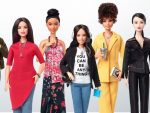Since Congress’ designation in 1987, Americans have celebrated Women’s History Month every March. The fight for women’s rights has long been connected to the month of March, dating back to 1910 when a German activist proposed that Women’s Day become an internationally recognized holiday at the International Conference of Working Women. Although the ways in which people celebrate women have changed throughout the years, women’s contributions to liberation movements have not. In honor of Women’s History Month, here are four feminists that you should know.
Angela Davis
Born in Birmingham, Alabama in 1944, Angela Davis grew up under segregation. From an early age, she fought back against oppression, organizing study groups where both white and Black students gathered and were continuously broken up by police. Education was a powerful force in her life, and in 1969 she began teaching at the University of California, Los Angeles. While working at UCLA, the administration became suspicious of her connection to the Black Panther Party and the Communist Party. Eventually, her radical politics landed her on the FBI’s Ten Most Wanted list after she was accused of several capital offenses, one of which was murder, because of her association with the Soledad Brothers. During the 18 months she spent in prison under the threat of the death penalty, Davis became a symbol of resistance.
Even before Kimberlé Crenshaw coined the term in 1989, Davis recognized the need for “intersectionality” in social justice work, advocating for complex issues she believed were inherently intertwined with one another. For example, in her most famous book, “Race, Women and Class,” she explores the intersections between racism and classism within the feminist movement and underscores the danger they pose for all women’s liberation. Today, she continues to promote abolitionism in all its forms, particularly through an end to the prison-industrial complex.
Dolores Huerta
Dolores Huerta co-founded the National Farm Workers Association (simply known today as United Farm Workers) with Cesar Chavez, a major union that continues to help pave the way for the labor rights of farm workers. Huerta was born in 1930 in Dawson, New Mexico, and, from an early age, she developed a passion for advocating for the rights of immigrant workers who were unprotected under US law. Before meeting Chavez, Huerta helped found a chapter of the Community Service Organization in 1955, which organized voter registration drives and pushed for economic improvements for Hispanics.
During her time as a leader of the National Farm Workers Association, Huerta directed two major strikes — one in 1965 and another in 1973 — of agricultural workers who harvested grapes. Through her efforts, she not only negotiated workers’ contracts and endorsed healthcare and unemployment benefits, but also ushered in the California Agricultural Relations Act of 1975. This landmark piece of legislation finally permitted farm workers to form unions and advocate for their own rights. Huerta exemplifies the motto she coined for the agricultural workers’ movement: “Sí se puede,” or “Yes we can.”
Grace Lee Boggs
The embodiment of community organization, Grace Lee Boggs was an activist based in Detroit, Michigan for the majority of her life. She was born in 1915 to Chinese immigrant parents in Providence, Rhode Island. During her college years at Columbia University and Bryn Mawr College, she studied philosophy, translating three of Karl Marx’s essays from German to English. Although she had a doctorate degree, Boggs struggled to find work after graduating in 1940 since no university wanted to hire a Chinese American woman. Forced to endure poor living conditions and a low-paying job, she began to put her philosophical ideas into practice by joining a sect of the Socialist Workers Party called the Johnson-Forest Tendency.
In 1953, Boggs moved to Detroit where she fought for civil, labor, Asian American and women’s rights. She not only believed in the transformative power of revolution, but also acknowledged that achieving true justice was a long, difficult process. She also emphasized the need for nonviolence when organizing or protesting. Boggs died on Oct. 5, 2015, at 100 years old. Her activism paved the way for those continuing to combat anti-Black and anti-Asian racism today.
Malala Yousafzai
Malala Yousafzai is one of the most well-known advocates for girls’ education today. Born in Pakistan in 1997, Yousafzai understood the power of education from an early age. In 2007, the Taliban gained control of the Swat Valley where Yousafzai lived, and prohibited girls from attending school. In response, Yousafzai continued attending school while blogging anonymously for the BBC about her experience. As she became more vocal, the Taliban targeted her for activism. On Oct. 9, 2012, the Taliban shot Yousafzai on her way home from school.
Following her recovery, she resumed her education in Birmingham, England. While still in high school, Yousafzai became the youngest recipient of the Nobel Peace Prize in 2014 for her work fighting for girls’ right to equal education. She later attended Oxford University where she studied philosophy, politics and economics. With the help of her father, Yousafzai also founded the Malala Fund, an organization that focuses on investing in girls’ education around the world. Most recently, Yousafzai attended the 2023 Oscars for the nomination of “Stranger at the Gate,” a documentary for which she served as executive producer. During the ceremony, when Jimmy Kimmel jokingly asked Yousafzai to share her opinion on the Harry Styles and Chris Pine spitting debate, she simply answered, “I only talk about peace.”

















